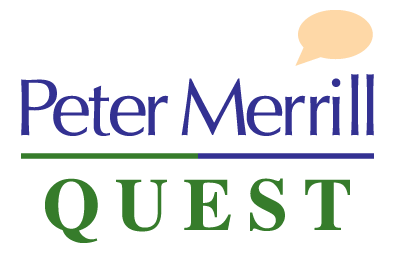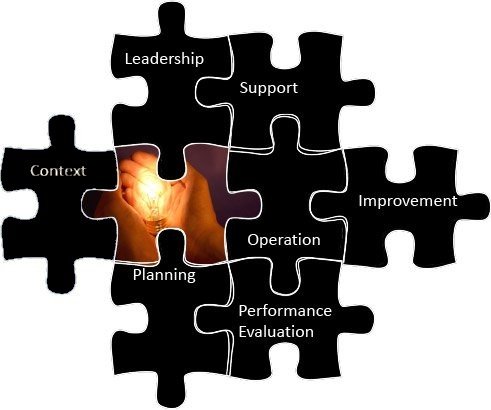Chapter 1 - Lesson 4: ISO 56002 Overview
ISO 56002
The lesson starts with feedback on the Case Study in Lesson 3 then takes you into an outline of ISO 56002, the Innovation Management System standard, while at the same time showing some of the links to ISO 9001:2015.
1. 2. and 3.
Clause 1 of the standard is about scope, and explains that the standard is not prescriptive and can apply to any organization. Clause 2 is normative references, which indicates other standards that are essential in order to use this standard. Clause 3 is terms and definitions. The terms and definitions used in ISO 56002 are available in ISO 56000.
4. Context of the Organization
A business interacts with many outside forces that affect strategy. Clause 4 is where the external and internal issues that affect the organization are identified. Opportunities arise when we identify needs that are not being met. The risks related to these issues will be evaluated in Clause 6. Then, also part of the context, is the culture. People want to know how to develop a creative culture that will co-exist with the execution culture of quality management.
5. Leadership
Clause 5, leadership, links Clause 4, context to Clause 6, planning. The innovation principles in ISO 56000 speak to the need for leaders who have curiosity, are courageous, and look to the future. Leaders will certainly be responsible for developing a culture of innovation and developing a strategy. You will also want to build innovation into your policy or mission. Clause 5.3 addresses roles and responsibilities. You will need a champion, and if innovation is something new for you, you may need change agents and a change plan.
6. Planning
In clauses 6.1 and 6.2, we address the risk that goes with opportunities and set innovation objectives. The output from 6.2 will be the innovation plan in which you identify whether you will be addressing product, process, or business model innovations. In clause 6.3, structure, you ask yourself how you will structure innovation into your organization. 6.4 is where we initiate our innovation portfolio. The portfolio will then get close attention in Clause 8, operation.
7. Support
Clause 7, support, gives you everything you need to enable innovation. We are used to managing the resources of time, money, and people, but how do we manage knowledge, which is the lifeblood of innovation? Knowledge is a short clause in ISO 9001, but it gets a lot more attention in ISO 56002. 7.2 is competence and creativity, is only one of the competencies in innovation. Awareness, 7.3, then engages people, and communication, 7.4, gives the framework for delivering information. 7.5 is documentation, and although the most frequently used MSSs do not require a manual, most organizations are continuing to use one, and this is where you can capture your innovation practices, as many of them will be new to you.
7.6 is tools and methods, and 7.7 is strategic intelligence feeds the knowledge base. New products and services will have intellectual property (IP) related to them, and this will need protecting. IP is clause 7.8.
8. Operation
It is important to initiate change by getting an early win, and you can achieve that early win in Clause 8 using your innovation process. This is the heart of your IMS. Yes, start drafting your strategy and start planning the culture change, but you will find out what innovation is really like, right here in the innovation process. The standard explains ‘innovation initiatives’ in clauses 8.1 and 8.2. I recommend you have just one initiative while you prototype your innovation process. Clause 8.2, managing innovation initiatives, provides a comprehensive checklist of what you should consider as you plan your initiative. Clause 8.3 provides the process elements, 8.3.2 Opportunity, 8.3.3 Create Concept Solution, 8.3.4 Validate Concepts, 8.3.5 Develop Working Solutions, 8.3.6 Deploy Solutions
9. Performance Evaluation
Metrics matter, and they can be different in the early creative steps of innovation. The metrics may be binary, simply saying “go” or “no go.” At the creative end of the innovation process, we measure softer issues such as the number of ideas created. Then we measure speed of development and, finally, at output we measure results. Clause 9 does, of course, include the internal audit of the IMS, and I prefer to call this “self-assessment.” Both this and the management review are quite similar to ISO 9001:2015.
10. Improvement
Once a solution is delivered, there is always learning to be gained. The impact on the user may not be what was anticipated, and weaknesses and gaps should be dealt with. This is where the strength of system thinking in an ISO management system strikes home. The system forces one to take action. The system approach enables you to become a serial innovator and not just a “one hit wonder.”
The lessons in the chapters ahead are then detailed.
Chapter 1 - Lesson 4: Video
The e-learning course from here onwards will explain how to develop your Innovation Management System using the guidance of ISO 56002 to prepare you for ISO 56001 certification. Each chapter will focus on a clause of the Management System starting with Clause 4 and working through to Clause 10. Each chapter is broken into either 3 or 4 lessons and each lesson typically focuses on a subclause.
Chapter 8 will take you into ISO 56001 and will explain the clauses of the standard but will focus on the practical auditing issues. Naturally I will not cover every detail of the audit, but for each clause I will point out the primary issues that the auditor will look for.
If you would like me to conduct a Gap Analysis or discuss a full implementation – Please email me at pm@petermerrill.com to set up a Zoom or MS Teams Call.
For more on Peter Merrill's Knowledge, Skills and Experience.

